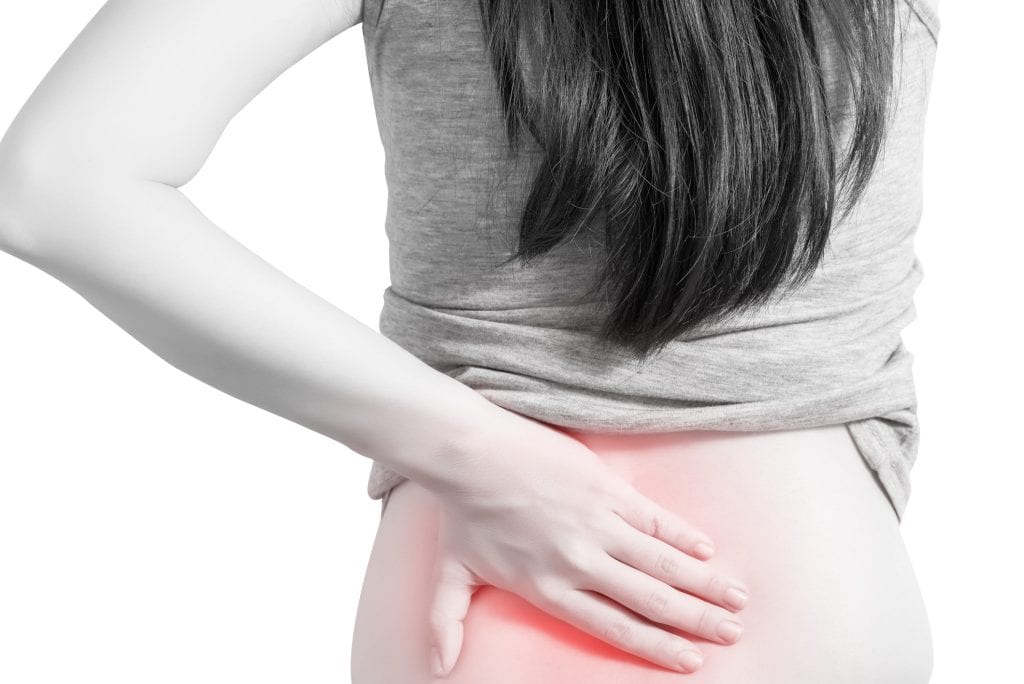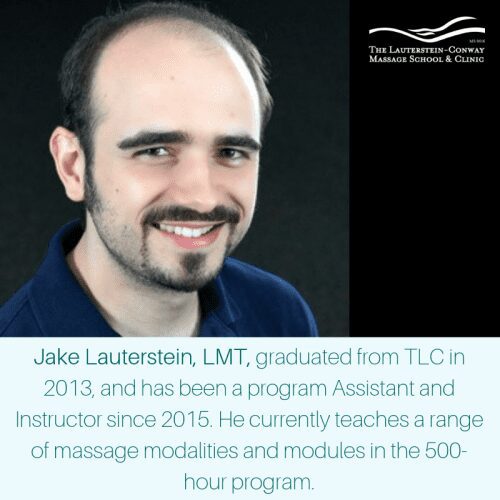Treating Scoliosis With Massage Therapy
By Jake Lauterstein
The vertebrae: a fascinating piece of our anatomical puzzle. When the back is pain free we can feel the “spring in our step”; the elegance of movement. But when our spine tips too far in one direction be it to the side, to the front, or the back, a whole host of alarms may be set off in the body. Pain, discomfort, lack of breath, even cardiovascular stress can all be the unfortunate accompaniments to structural devations.
 Three of these deviations as they relate to spinal curvatures are hyperkyphosis (a forward bent thoracic spine), hyperlordosis (an overly concave lumbar or cervical spine), and scoliosis (a laterally curved spine).
Three of these deviations as they relate to spinal curvatures are hyperkyphosis (a forward bent thoracic spine), hyperlordosis (an overly concave lumbar or cervical spine), and scoliosis (a laterally curved spine).
In early education a nurse may have visited your classroom to take some measurements and observe the curvature of your growing vertebrae. These brief moments of palpation and assessment are used to assess and check for scoliosis, kyphosis, or lordosis. As we age many of us will experience hyperkyphosis or lordosis when, through genetic predisposition, posture, or repetitive movement, the bones and their joints begin to arc towards one direction, leaving the muscles working overtime to bring balance to our everyday locomotion.
In total all three of these conditions account for an estimated 6 million diagnoses each year guaranteeing that we will encounter clients with one or more of these issues.
The usefulness and convenience of new technologies has had an unfortunate repercussion: aches and pains from the seated and downcast-gazing posture assumed while watching a screen. Many clients are likely to spend a majority of their day sitting down at work, at home, and in their vehicle loading the spine in an unbalanced fashion. After extended periods of time in this static forward-folded posture the body begins to fire warning signals, often in the form of back pain.
Treating Scoliosis Requires Thoughtful Massage
For our clients with scoliotic curvatures this pain can be felt acutely often forming a one-sided pain pattern which begs to be addressed. Often this pain occurs along the convex side of the scoliotic curve. On this side we will find musculature which is overly stretched or “locked” in a lengthened position.
While it is important to address the pain occurring on this “long” side and provide relief for our client, if we want to touch on the root of the condition then we will be mindful to not focus extensively on lengthening and loosening these muscles which are already over-stretched. We must have a clear understanding of the musculature itself, where it is bowed and long, or short and taught, and practice specific techniques to provide informed treatments.
Traditional treatments for these conditions include anything as simple as postural instruction, stretching and strengthening target muscle groups, all the way up to a myriad of different surgical interventions working along the spine to dramatically realign the structures affected.
Many clients are well aware of their condition and the ways they may have adapted to musculo-skeletal stress. In many cases these conditions are considered idiopathic with no identifiable reason for their development. When faced with the challenges these conditions present, many clients look to massage therapists for movement restoration and lasting relief from pain.
Massage techniques which aim to restore movement and reduce pain will specifically work on relaxing the overly shortened compensatory patterns and providing stimulation and “waking up” eccentrically lengthened muscles which are overly stretched.
Massage is a business of hope and change. We cannot cure these conditions, nor do we always know their cause. We can only create the opportunity for change. Through skillful touch, knowledge of anatomy, patience, and compassion we may be pleasantly surprised by the resulting effect of our work.
Learn more about working with spinal curvatures in our continuing education programs.

